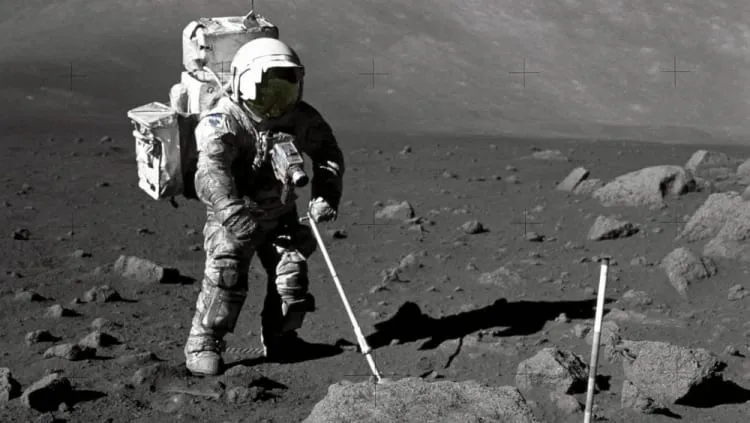NASA is still studying material brought back from the Moon. A new analysis method is slicing up single grains of dust, and analyzing each atom contained inside.
Analyzing dust from Apollo 17, they have found that a colony on the moon, using local materials, is possible. This detail using minute volumes has never been possible before, and with the values of the moon material; this critical data has been out of reach.
Image from article:
https://www.techbriefs.com/component/content/article/tb/stories/blog/36082?utm_source=TB_Main_News&utm_medium=email&utm_campaign=20200211&oly_enc_id=4680G9267356C4X

Article on data gathered from Moon recovered dust material:
https://www.techbriefs.com/component/content/article/tb/stories/blog/36082?utm_source=TB_Main_News&utm_medium=email&utm_campaign=20200211&oly_enc_id=4680G9267356C4X
Accurate results have been limited, because they are destructive in nature, and the 'material pool' is finite. On the other side of the coin, knowing what material is actually there; can mean life and death!
In 1972, astronauts from the Apollo 17 mission brought home more than 200 pounds of lunar rocks and soil.
Now researchers from the University of Chicago are using just a tiny bit of the sample to answer big questions about the Moon's composition and the formation of precious resources like water and helium.
From a single grain of dust, the scientists analyzed the chemistry of the Moon’s soil.
The team's understanding of the lunar environment, published in Meteoritics & Planetary Science , will support the efforts of future astronauts as they prepare for longer-duration explorations to the Moon.
The distance to the moon makes it impossible to resupply from Earth. So if it can't be found locally (on the moon) it will be difficult to impossible to supply from here. So knowing exactly what is there is critical to any moon colony effort!
They have re-purposed a technology current being use for something else; to extract data, from a micro sized sample.
That technique, known as atom probe tomography (APT), is one most commonly used in the manufacturing and analysis of steel and nanowires.
The APT system combines a mass spectrometer and a microscope. Electric pulses remove ions from a sample surface, allowing the atoms to then be imaged and identified.
To study the tiny grain, Greer used a focused beam of charged atoms to carve a very sharp, very tiny tip — only a few hundred atoms wide — into its surface.
She pursued this tiny data collection method, to make a critical contribution to the NASA effort to colonize the moon!
In the tiny grain, Greer identified pure iron, water, and helium, which formed through the interactions of the lunar soil with the space environment. Such resources could help future astronauts sustain their activities on the Moon.
Greer also discovered evidence of space weathering, a change in the lunar materials due to the harsh, atmosphere-less environment.
“Because of something like this, we understand what the environment is like on the Moon. It goes way beyond what astronauts are able to tell us as they walk on the Moon," said Greer. "This little grain preserves millions of years of history."
Here is a video covering this test:

So the critical planning for a moon colony is able to proceed at NASA; due to a tiny piece of dust, and a test method that slices it up!